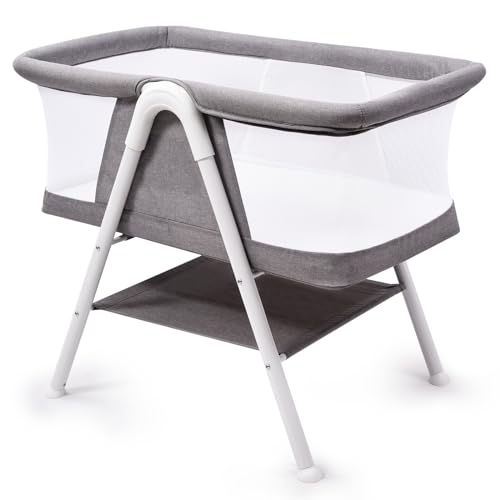Cot for Newborns: A Comprehensive Guide
Picking the right sleeping plans for a newborn is one of the most substantial decisions moms and dads face. Amongst the essentials for new parents is a cot, which functions as a safe, comfy sleeping space for the baby. This article will explore the various types of cots available, essential safety considerations, ideas for selecting the best one, and upkeep standards to guarantee durability and safety.
Kinds of Cots for Newborns
When it concerns cots, there are numerous options in the market. Each type has its unique functions and advantages. Below is a table summarizing the various types of cots readily available for babies.
| Type of Cot | Description | Pros | Cons |
|---|---|---|---|
| Requirement Cot | A classic crib with fixed sides. | Strong and resilient; helpful for long-lasting usage. | Can be bulky; may not fit in smaller sized areas. |
| Cradle | A little, rocking cot developed for babies. | Portable and soothing for babies. | Limited use as baby grows; less stable. |
| Moses Basket | A lightweight basket with deals with. | Extremely portable; comfortable for babies. | Much shorter life-span; normally not appropriate for older children. |
| Travel Cot | A foldable cot appropriate for travel and momentary usage. | Easy to transport; typically simple to establish. | May lack durability; not as visually pleasing. |
| Co-sleeper Cot | Attaches to the parents' bed, allowing distance. | Promotes bonding; breastfeeding benefit. | Minimal area; typically more costly. |
| Convertible Cot | Can change from a crib to a young child bed. | Adapts with baby's growth; long-term financial investment. | Greater initial expense; assembly may be needed. |
Crucial Safety Considerations
When selecting a cot for a newborn, safety must constantly be the main concern. Here is a list of important security requirements and standards to think about.
- Standards Compliance: Ensure the cot satisfies safety requirements set by regulatory bodies such as the Consumer Product Safety Commission (CPSC) in the U.S. or the European security standards.
- Slat Spacing: The range between cot slats must not surpass 2 3/8 inches (6 cm) to avoid a baby's head from getting stuck.
- Stability: The cot needs to be sturdy and stable. Shake Baby Cots before purchasing to guarantee it doesn't wobble.
- Mattress Fit: The mattress ought to fit snugly into the cot, without any gaps bigger than 2 fingers in between the mattress and the cot sides.
- No Hazardous Materials: Check for non-toxic surfaces and products, ensuring that the cot is devoid of harmful chemicals.
- Eliminate Clutter: Avoid putting toys, pillows, or blankets inside the cot, as these can posture suffocation dangers.
Tips for Choosing the Right Cot
Picking a cot can be a frustrating procedure due to the myriad of alternatives available. Here are some ideas to assist simplify this process:
- Consider Size: Evaluate the size of your nursery or bed room. Make sure the cot fits conveniently in the designated area.
- Prepare for Growth: Think about the longevity of the cot. Convertible cots may provide much better value by adapting to a growing kid.
- Budget Wisely: Quality cots can range widely in price. Set Affordable Cots spending plan and stick to it, focusing on safety and performance initially.
- Research Brands: Read reviews and perform research on various brand names. Trustworthy manufacturers ought to provide transparent info about their safety practices.
- Convenience: Ensure that the mattress is firm and supplies appropriate assistance. A soft mattress may increase the danger of SIDS (Sudden Infant Death Syndrome).
- Looks Matter: While safety is essential, think about how the cot suits the general decor scheme of the nursery.
Upkeep of the Cot
Making sure the safety and longevity of your newborn's cot requires continuous maintenance. Here are some practical maintenance pointers:
- Regular Inspections: Routinely check the cot for any loose screws or parts. Tighten them as needed to keep toughness.
- Tidiness: Wipe down the cot routinely with a damp fabric and moderate soap to get rid of dust and allergens.
- Bed mattress Care: Choose a waterproof cover for the bed mattress, making it simple to clean spills or accidents. Frequently change the mattress if it reveals signs of wear and tear.
- Safe Storage: If the cot is adjustable or convertible, store any detachable parts in a protected area, ensuring they are not lost and are accessible for future use.
- Kid's Development: Monitor your child's development. Shift to a young child bed when they start climbing out of the cot to ensure their safety.
Regularly Asked Questions (FAQs)
1. What is the very best kind of cot for a newborn?
The very best cot differs depending upon individual requirements and space, but a Standard Cot is typically recommended for its toughness and long life-span.
2. The length of time can a newborn use a cot?
Usually, many babies shift out of a cot between 2-3 years depending on height and weight.
3. Is a co-sleeper cot safe?
Yes, co-sleeper cots are created to be safe, as long as they fulfill safety requirements and are effectively established.
4. Should I use bumpers in my cot?
It is advised to avoid utilizing bumpers as they position a suffocation danger. Instead, make sure the cot is clear of any soft bed linen.
5. Can I use a pre-owned cot?
If thinking about a second-hand cot, guarantee it follows the current safety requirements and has actually not surpassed its life-span or been recalled.
Picking a cot for a newborn is a vital decision that needs cautious consideration of safety, area, and functionality. By understanding the types, safety functions, and maintenance requirements, parents can with confidence pick a cot that satisfies their household's requirements. Ultimately, the ideal cot will supply a safe and comfy space for your newborn to sleep, adding to their wellness and development during those essential early years.

